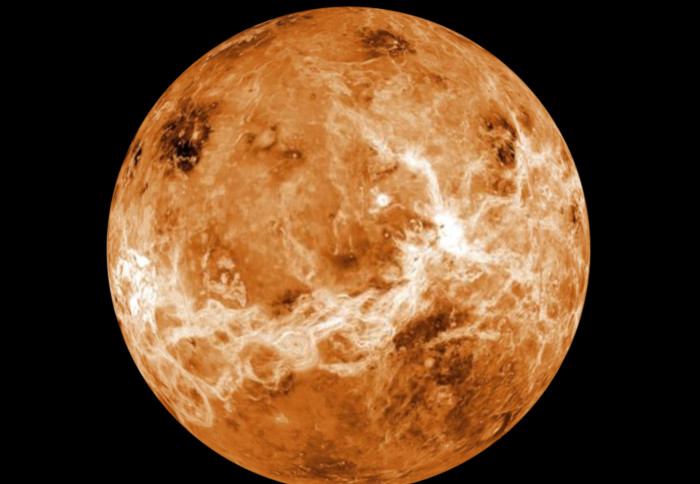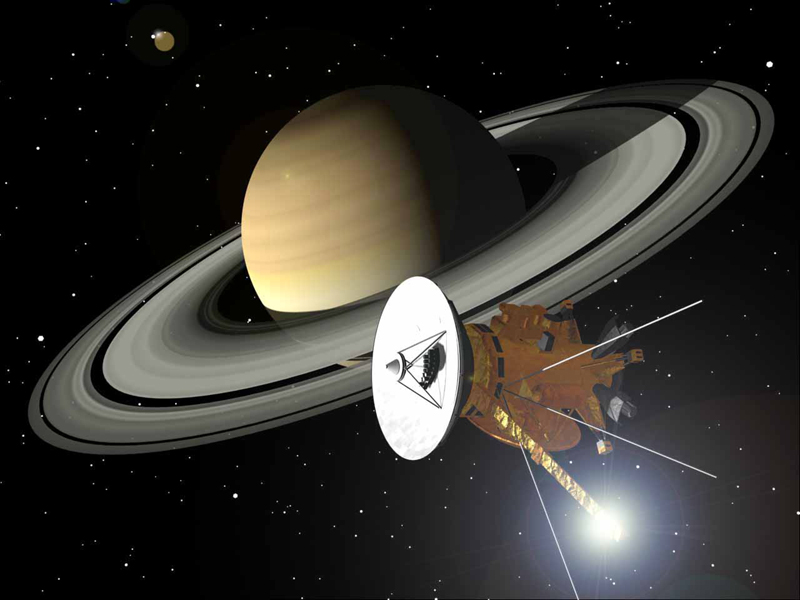Smallest Star in the Universe

No one could possibly be sure that a star is either the biggest or the smallest one in the whole Universe. We can say that astronomers have discovered a star so big that if it were in the Sun's place, it would fill the space out to halfway between the orbits of Jupiter and Saturn. And at the opposite extreme, the smallest known star is 2MASS J05233822-1403022, which is a pretty big name for a star that's about the size of Saturn. But could there be even smaller ones as yet unknown?
Birth of tiny stars
Stars form from the gravitational collapse of gas in a nebula. The parts of the nebula that are slightly denser than the rest begin to collapse first, and then they attract more and more matter, forming ever denser clumps. From these clumps protostars form.
A protostar is hot because gravitational collapse releases heat. For as long as the protostar is gaining mass, the temperature increases. Finally, to become a real star the protostar needs enough mass to reach the temperature needed to start nuclear fusion – that's several millions of degrees.
Physicists calculate that the minimum mass needed to create the conditions for hydrogen fusion is somewhere from 7 - 8% of the Sun's mass. They don't yet have an exact value for the mass limit. There are still many factors involved in star formation that aren't well understood.
Brown dwarfs vs red dwarfs
If a protostar doesn't make it to the mass limit, it's left as a brown dwarf, a failed star. The mass range of brown dwarfs starts at about thirteen times that of Jupiter, with the heaviest ones maybe reaching 75-80 times Jupiter's mass.
Since red dwarfs are the smallest stars, the very smallest star would be a red dwarf just over the mass limit. It would have a mass similar to that of the biggest brown dwarfs. That would leave it the size of a gas giant planet, but with a mass about eighty times as great.
Gravity is the force that pulls matter together. Although stars come into being by gravitational collapse of nebulae, heavenly bodies can't exist unless they resist the inward pull of gravity. In stars, the radiation pressure from nuclear reactions in the core is the outward force that balances gravity. But brown dwarfs are subject to different forces.
Since the core of a brown dwarf never gets enough mass to start hydrogen fusion, the only heat is produced by gravitational contraction. Yet as the brown dwarf cools, a weird force keeps it from collapsing, because the matter in the core is degenerate. This isn't a moral judgment. It refers to a particular quantum mechanical state that doesn't depend on temperature. Although the degeneracy pressure stops the brown dwarf from collapsing, it also stops it from acquiring more mass. This is why it can't get to be a real star.
A star's mass is directly related to its temperature, which is convenient for astronomers, because temperature is much easier to determine than mass. Higher-mass stars are bigger and hotter than lower-mass stars. But this isn't the case for brown dwarfs. Because of the strange behavior of degenerate matter, higher-mass brown dwarfs are smaller than lower-mass brown dwarfs.
Finding the smallest star
Finding really big stars is difficult if they're a long way away, but finding small stars is tricky at any distance. All red dwarf stars are invisible to the unaided eye. Although about 75% of the stars around us are red dwarfs, none were seen until two centuries after the first use of astronomical telescopes.
Brown dwarfs are even harder to find. They're smaller and cooler than red dwarfs, and give out almost no visible light, radiating mainly in infra-red. The first confirmed discovery of a brown dwarf was in 1994.
Tiny stars and dark dwarfs are not only hard to see, but sometimes also difficult to distinguish from each other. Therefore if you want to try to find the smallest red dwarf and test the mass limit, you'd have your work cut out for you. As it happens, astronomers are very determined, and a group at Georgia State University in the USA, led by Sergio Dieterich, took up the challenge. They studied 63 objects that seemed to be near the borderline between stars and brown dwarfs.
When they graphed their results, they plotted radius (size) against temperature (mass). As expected, the radius decreased with temperature – these were the red dwarfs. But it happened only down to about 1830 °C (3300 °F). They were quite excited to see a break there. And then the radii increased as temperature decreased – what they expected of a set of brown dwarfs.
The smallest star so far
At the bottom of the stellar part of the graph, there was red dwarf 2MASS J05233822-1403022. You can barely see it in visible light, but it shows up well in infrared. It's forty light years away in the constellation Lepus (the Hare). Its name shows that it was discovered in the 2-Micron All Sky Survey, and the numbers give its sky coordinates. The teensy star, about the size of Saturn, has a mass less than 8% of the mass of the Sun. Its temperature of 1800 °C is less than a third of the Sun's 5600°C.
Nonetheless the models predict that the mass limit is around 1400° C. So 2MASS J0523-1403 probably isn't the smallest star around. It may be just the smallest star found out of a limited sample of stars.
Birth of tiny stars
Stars form from the gravitational collapse of gas in a nebula. The parts of the nebula that are slightly denser than the rest begin to collapse first, and then they attract more and more matter, forming ever denser clumps. From these clumps protostars form.
A protostar is hot because gravitational collapse releases heat. For as long as the protostar is gaining mass, the temperature increases. Finally, to become a real star the protostar needs enough mass to reach the temperature needed to start nuclear fusion – that's several millions of degrees.
Physicists calculate that the minimum mass needed to create the conditions for hydrogen fusion is somewhere from 7 - 8% of the Sun's mass. They don't yet have an exact value for the mass limit. There are still many factors involved in star formation that aren't well understood.
Brown dwarfs vs red dwarfs
If a protostar doesn't make it to the mass limit, it's left as a brown dwarf, a failed star. The mass range of brown dwarfs starts at about thirteen times that of Jupiter, with the heaviest ones maybe reaching 75-80 times Jupiter's mass.
Since red dwarfs are the smallest stars, the very smallest star would be a red dwarf just over the mass limit. It would have a mass similar to that of the biggest brown dwarfs. That would leave it the size of a gas giant planet, but with a mass about eighty times as great.
Gravity is the force that pulls matter together. Although stars come into being by gravitational collapse of nebulae, heavenly bodies can't exist unless they resist the inward pull of gravity. In stars, the radiation pressure from nuclear reactions in the core is the outward force that balances gravity. But brown dwarfs are subject to different forces.
Since the core of a brown dwarf never gets enough mass to start hydrogen fusion, the only heat is produced by gravitational contraction. Yet as the brown dwarf cools, a weird force keeps it from collapsing, because the matter in the core is degenerate. This isn't a moral judgment. It refers to a particular quantum mechanical state that doesn't depend on temperature. Although the degeneracy pressure stops the brown dwarf from collapsing, it also stops it from acquiring more mass. This is why it can't get to be a real star.
A star's mass is directly related to its temperature, which is convenient for astronomers, because temperature is much easier to determine than mass. Higher-mass stars are bigger and hotter than lower-mass stars. But this isn't the case for brown dwarfs. Because of the strange behavior of degenerate matter, higher-mass brown dwarfs are smaller than lower-mass brown dwarfs.
Finding the smallest star
Finding really big stars is difficult if they're a long way away, but finding small stars is tricky at any distance. All red dwarf stars are invisible to the unaided eye. Although about 75% of the stars around us are red dwarfs, none were seen until two centuries after the first use of astronomical telescopes.
Brown dwarfs are even harder to find. They're smaller and cooler than red dwarfs, and give out almost no visible light, radiating mainly in infra-red. The first confirmed discovery of a brown dwarf was in 1994.
Tiny stars and dark dwarfs are not only hard to see, but sometimes also difficult to distinguish from each other. Therefore if you want to try to find the smallest red dwarf and test the mass limit, you'd have your work cut out for you. As it happens, astronomers are very determined, and a group at Georgia State University in the USA, led by Sergio Dieterich, took up the challenge. They studied 63 objects that seemed to be near the borderline between stars and brown dwarfs.
When they graphed their results, they plotted radius (size) against temperature (mass). As expected, the radius decreased with temperature – these were the red dwarfs. But it happened only down to about 1830 °C (3300 °F). They were quite excited to see a break there. And then the radii increased as temperature decreased – what they expected of a set of brown dwarfs.
The smallest star so far
At the bottom of the stellar part of the graph, there was red dwarf 2MASS J05233822-1403022. You can barely see it in visible light, but it shows up well in infrared. It's forty light years away in the constellation Lepus (the Hare). Its name shows that it was discovered in the 2-Micron All Sky Survey, and the numbers give its sky coordinates. The teensy star, about the size of Saturn, has a mass less than 8% of the mass of the Sun. Its temperature of 1800 °C is less than a third of the Sun's 5600°C.
Nonetheless the models predict that the mass limit is around 1400° C. So 2MASS J0523-1403 probably isn't the smallest star around. It may be just the smallest star found out of a limited sample of stars.
You Should Also Read:
Do Red Dwarfs Live Forever
How Big Are the Biggest Stars
Starbirth

Related Articles
Editor's Picks Articles
Top Ten Articles
Previous Features
Site Map
Content copyright © 2023 by Mona Evans. All rights reserved.
This content was written by Mona Evans. If you wish to use this content in any manner, you need written permission. Contact Mona Evans for details.







